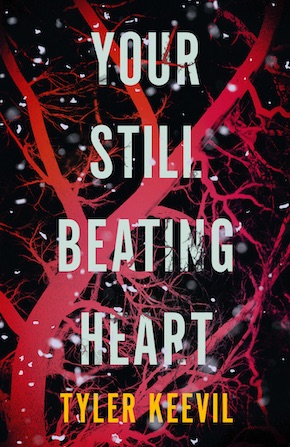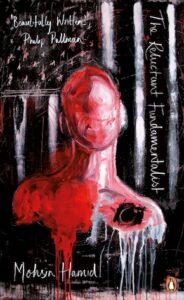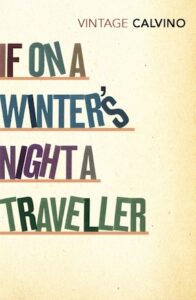You and the story
by Tyler Keevil
“I was blown away. Beautiful writing… stunning.” Miriam Toews
Second-person narration, in which the author uses the pronoun ‘you’ to seemingly address the reader and draw them into the story, can be a bit of a high-wire balancing act. Or, to apply an analogy more suited to my West Coast background (I’ve never tried any circus stunts, let alone a high-wire act), writing in second person is like attempting an audacious snowboarding trick. If you pull it off, for the audience it’s breathtaking and exhilarating. If you get some wobbles, become disorientated and lose control, there’s the risk of an embarrassing fail, with melodramatic results: tumbling and flopping, flailing all over the place, leaving a chaotic mess behind you on the slope (or on the page). For that reason, fledgling riders should best avoid trying such stunts, just as fledging writers are often advised against using second person. At least, that’s traditionally been one of the standard (and overused) ‘rules’ of Creative Writing programmes, along with other gold-minted mantras like ‘show don’t tell’ and ‘write what you know’. I’m one of the culprits: I can recall instances of guiding students away from writing in second person. But rules, as we all know, are made to be broken.
All the same, in developing my new novel, Your Still Beating Heart, I can’t make any grandiose claim about setting out to break the rules by using second-person techniques. It was more a process of intuition and discovery. The opening chapter, in which a young woman witnesses the death of her husband in a random stabbing on a London bus, was conceived in second person to serve as a tense and gripping opener, the classic ‘hook’ after which the novel would settle into a more traditional narrative style. But that opening was so effective, and the process of drafting it so thrilling, I found I couldn’t stop. The narrative voice was compelling and liberating, and the rest of the novel burned through me and flowed very quickly. In reflecting on the experience and selecting this list, I’ve picked examples of second person – and variations on it, such as first-person direct address – that have stayed with me, and others which served as influences and sources of inspiration along the way.
The Collector of Hearts: New Tales of the Grotesque by Joyce Carol Oates
I still remember the moment I came across this book, in a (now sadly closed) bookstore on Lonsdale Avenue back in North Vancouver. I was intrigued by the allusion to Poe in the title, but nothing prepared me for the mix of literary horror, fantasy and gothic surrealism, or the incredible range and virtuosity of Oates. Several stories are written in second person, and under the guidance of Oates ‘you’ are made to identify with a murder victim, a patient in intensive care, and a woman searching her family home for her missing father. Both ‘The Sepulchre’ and ‘Posthumous’ begin with an identical line: “This is how it was, or will be.” I just loved that confidence – her flair and swagger and panache.
After he’d walked away he heard the sound of a body hitting water and screaming, but still did not do anything to check on her or help. Those ideas fascinate me: the choices we make and actions we take that define us.”
The Fall by Albert Camus
The opening to The Fall has something of The Rime of the Ancient Mariner about it: the sense that somebody is being accosted to be an audience, to hear a story and a confession. Though rather than a haunted sailor with a tale of misdeeds on the high seas, and the repercussions and penitence, Camus’s narrator was a Parisian lawyer, and initially recounts his glory days as “a man at the height of his powers, in perfect health, generously gifted, skilled in bodily exercises as in those of the mind.” But he too is haunted, not by an action taken – the shooting of an albatross – but by his owninaction. Eventually he recounts a crucial moment in his life when he came across a lone woman in black, poised on a bridge, and instinctively sensed something was wrong – but did nothing. After he’d walked away he heard the sound of a body hitting water and screaming, but still did not do anything to check on her or help, and the incident leads, eventually, to a downward spiral as he struggles to come to terms with the truth it reveals about him. Those ideas fascinate me: the choices we make and actions we take that define us.
The Reluctant Fundamentalist by Mohsin Hamid
I’ve wondered if Mohsin Hamid is interested in or was influenced by Camus, since his novel shares the concept of a narrator addressing another person (and us the reader) in a cafe setting (Amsterdam in the case of Camus, Lahore in the case of Hamid). It similarly returns to that second person ‘frame’ at periodic intervals, between stretches of the novel that reflect back on the life of the narrator, a Princeton graduate and consultancy firm analyst, who becomes increasingly disenchanted with America. It’s a great example of the flexibility and fluidity of second person, as there is the sense that here it’s also functioning as a dramatic monologue. The result is brilliant and troubling and subtle and murky and enigmatic. It offers no easy answers but poses some very difficult questions. Those questions have stayed with me and the story continues to have a powerful resonance.
How to Get Filthy Rich in Rising Asia by Mohsin Hamid
To have two books by one author in a Top Ten might seem surprising, but it’s also quite extraordinary that Mohsin Hamid has written two pitch-perfect novels that use second person, whereas very few authors even attempt one. The tone here is very different to The Reluctant Fundamentalist, since – as we can deduce from the title – the book presents itself as a satire of self-help guides (for business entrepreneurs, in this case). That lightness of touch is maintained, but as the novel progresses it also charts the arc of an entire life, with depth, poignancy and pathos. By the end it has transcended the satirical start and functions more as an indictment, and elegy, of the flawed and faltering ways we live our lives. Here, the use of second person seems to ask us: can any of us truly judge? Do we always make the right decision, conduct ourselves with integrity? Treat our loved ones with care and kindness? Or are we as blinkered and driven and self-centred as this character can be, gleaning only flashes of self-recognition? Despite that, it also seems to imply there is still the possibility for a kind of deliverance – for us to aspire to, as Alice Munro puts it, a little bit of grace.
Ablutions by Patrick deWitt
DeWitt is most famous for The Sisters Brothers, a truly wild tale about the Wild West, which was adapted into a star-studded film. Ablutions, his debut, is less well-known: it’s a dark comedy about an alcoholic bartender in a rundown Hollywood bar. His booze-soaked behaviour eventually leads to the breakdown of his relationship – most of his relationships, actually – and he begins stealing from his employer before embarking on a self-destructive road trip. Some of those elements might seem standard, but deWitt’s treatment elevates them to a whole new level. The tragi-comic debauchery is eye-opening, and can be eye-watering. Moments that stand out include when the main character swallows handfuls of aspirin to cure a terrible hangover, and his eulogy to Jameson’s Irish Whiskey, his poison of choice. For me, in this novel the use of second person has a distancing, dissociative effect – as if this pitiable level of addiction and degeneracy could only happen to somebody else. Not me. You.
‘Little Creatures’ from Life After God by Douglas Coupland
A bit of a lighter selection. Douglas Coupland was the writer who really put Vancouver on the literary map so I was very aware of him growing up. Life After God is an eclectic mix of whimsy, pathos, tragedy and humour. ‘Little Creatures’ leans more towards the whimsical. It’s about a father and child on a road trip from the Fraser Valley up to Prince George in northern British Columbia. It’s another excellent example of the flexibility of second person, since the narration is actually an example of first-person direct address, in which one character is addressing another; in this case the ‘you’ is the child. It’s clear the parental relationship has broken down (the father stops to make a phone call to his lawyer) but in the car he tells the child fairy tales and fables, about made-up characters like Clappy the Kitten – a failed ‘movie star’ – and Doggles the dog, who was meant to have a starring role in Dr Seuss’ The Cat in the Hat series. It ends with a mournful reflection on “these beautiful little creatures who were all supposed to have been part of a fairy tale but who got lost along the way.”
‘In the Lap of the Gods’ from Table Manners by Susmita Bhattacharya
Susmita is an alumnus of Cardiff’s Creative Writing programme, where I teach (though I can’t claim to have taught Susmita as she studied there before my time). She has since gone on to establish herself as an academic and award-winning author, and last year we invited her back to do a guest talk for our students. It’s always exciting and inspirational to have alumni return. As part of the visit she read for our students at an evening event, and selected ‘In the Lap of the Gods’, which makes use of second person (though as with Coupland the approach falls under what sticklers would call first-person direct address). It was wonderful to hear her reading this story, about two young women who meet at a Christian summer camp amid the Ghats, and the lasting impact such encounters can have. It reminded me of the power and intimacy of the second-person voice.
You are drawn into a metafictional puzzle of a novel, and into a global conspiracy… an exemplar of the form.”
If on a Winter’s Night a Traveller by Italo Calvino
I think once you’ve read the opening to Calvino’s novel, you never forget it. It still feels so fresh and funny many years after its publication: “You are about to begin reading Italo Calvino’s new novel… Relax. Concentrate. Dispel every other thought.” After a startling and captivating opening, the first chapter offers some reflections on the nature of reading itself. ‘You’ are then drawn further into a metafictional puzzle of a novel, and into a global conspiracy, though – as if that isn’t enough – the chapters about ‘you’ are interspersed with chapters that represent the start of ten different novels. The book was on my reading list at university, and its influence is ubiquitous – it doesn’t need further eulogising from me – and I felt it just had to be included here, as an exemplar of the form.
The Choose Your Own Adventure series by R.A. Montgomery et al.
A bit of a wild card, this one, but the catchphrase “you are the star of the story’ was a big part of my childhood. In this series, you get to make choices that affect how the plot unfolds, and I remember these books being eagerly shared and discussed in elementary school. Eventually, of course, we outgrew them, and – like Puff the Magic Dragon and the toys from Toy Story – the tattered copies were relegated to boxes in closets and bins in charity shops. But the impression was lasting. Now that I’m a parent I’ve bought a few copies for my own children. There are new, friendly and colourful editions for younger kids, and I’ve also found some of the classics. I was struck by how unnervingly random the stories are: good behaviour isn’t always rewarded, and sometimes the seemingly smart decision can lead to a bad end for you. Some would argue that’s a realistic reflection of our existence – depending on your life philosophy, of course.
‘Happy Endings’ from Murder in the Dark by Margaret Atwood
In what almost seems like a playful nod to the above, in her story ‘Happy Endings’ Margaret Atwood offers the reader, choices that affect the outcome in this tale of the couple John and Mary. Right from the start, those who’d like the ‘happy ending’ of the titled are directed to a particular section. Throughout we are then given various versions of, and variations on, John and Mary’s story – and are often referred back to the happy ending section, before the narrator reaches the conclusion that ‘The only authentic ending is the one provided here: John and Mary die. John and Mary die. John and Mary die.’ Other stories in the collection also use second person to address you, the reader, and pose questions about the nature of reading, writing, and the art – and artifice – of storytelling.
 Tyler Keevil is the author of three novels, including The Drive (Myriad Editions) and No Good Brother (Borough Press). He has received numerous awards, including the Wales Book of the Year People’s Prize and the Writers’ Trust of Canada/McClelland & Stewart Journey Prize. He is Director of the MA in Creative Writing at Cardiff University. He grew up in Vancouver and moved to Wales in his twenties, and now lives in Abergavenny. Your Still Beating Heart is published by Myriad Editions in hardback and eBook.
Tyler Keevil is the author of three novels, including The Drive (Myriad Editions) and No Good Brother (Borough Press). He has received numerous awards, including the Wales Book of the Year People’s Prize and the Writers’ Trust of Canada/McClelland & Stewart Journey Prize. He is Director of the MA in Creative Writing at Cardiff University. He grew up in Vancouver and moved to Wales in his twenties, and now lives in Abergavenny. Your Still Beating Heart is published by Myriad Editions in hardback and eBook.
Read more
tylerkeevil.com
@TylerKeevil
@MyriadEditions
Author portrait © Naomi Doyle



